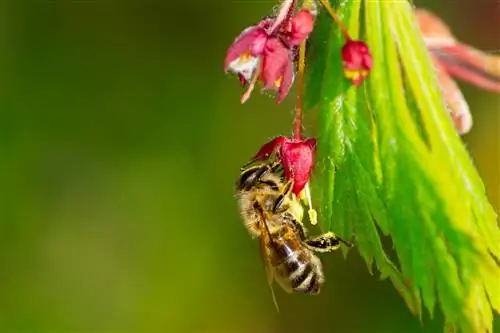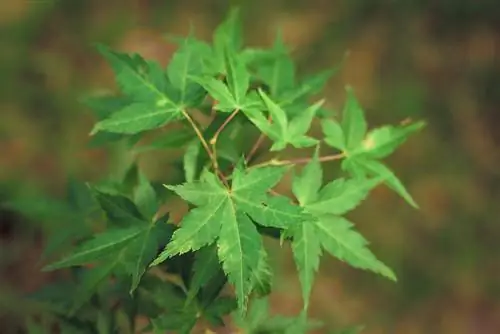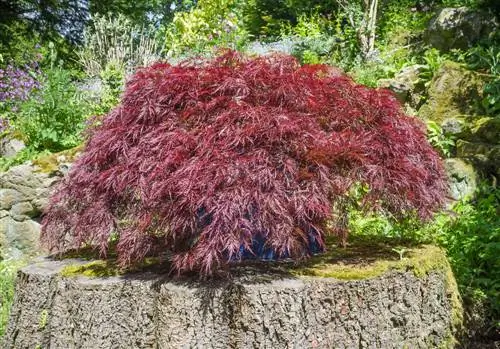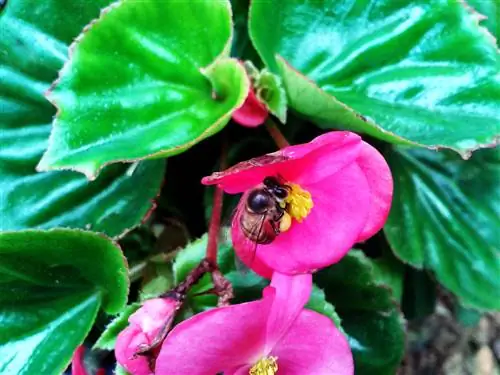- Author admin [email protected].
- Public 2023-12-16 16:46.
- Last modified 2025-01-23 11:22.
The Japanese maple primarily attracts admiration with its shapely, colorful foliage. In order to reproduce, it also has to open many flowers. Of course, these have to be pollinated so that the split fruits can then form. Can the bees do this, of course for a delicious nectar reward?
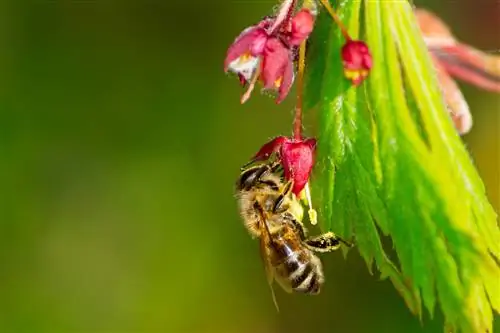
Is the Japanese maple bee-friendly?
Yes, the Japanese maple, scientifically Acer palmatum, which comes from Japan, is consideredvery bee-friendlyThe numerous small flowers offer bees a lot of nectar, early in the year. Other insects also like to fly to the small tree.
When does the Japanese maple bloom?
The Japanese Japanese maple is represented by many varieties in this country. Most varieties bloom at the same time as the leaves emerge, sometimebetween April and May, depending on the location and weather with a deviation of a few days. Some varieties only bloom from May to June. Since fewer plant species bloom in April and May than in summer, the maple flowers are even more important as a pasture for bees.
What do the Japanese maple flowers look like?
Approximately between 10 and 20 flowers form a semi-hanging, 3-4 cm long umbrella panicle. The individual flowers have the following characteristics:
- 4 to 6 mm Diameter
- double perianth
- fivered, elongated, about 3 mm largesepals
- fivelight yellowto pink, obovatepetals
- eight long, yellow stamens
- long stylus
Unfortunately my Japanese maple isn't blooming, why?
The Japanese maple is very diverse. Not every species of maple is hardy for our latitudes. But almost every species blooms before the danger of frost has passed. If your Japanese maple is not blooming, it has most likely suffered fromlate frost.
Tip
Fan maple can also be cultivated in a pot
A bee pasture doesn't have to be a real pasture, nor does it have to be a piece of garden bed. She can stand on the balcony! The Japanese maple remains small in this country, some varieties are even so small that they can grow easily in pots. There, too, they are guaranteed to be discovered by bees and bumblebees.

